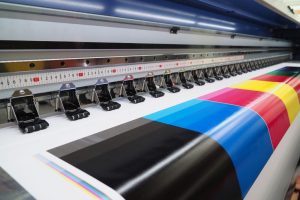Eco -Printing
With the increasing awareness of the enterprises and organizations on environmental protection, eco-friendly inks have become a major trend in the printing and spray painting markets. What exactly are “eco-friendly inks” in the market?
In fact, no ink is absolutely good for the environment. Eco-friendly inks actually refer to the kinds of inks that cause lesser harm to the environment. Whether an ink is environmental friendly depends on its sustainability. Traditional inks adopt mineral oils extracted from mineral substances, which still leave a large amount of heavy metals on the printed products after production. Some of these materials are toxic and can be absorbed through the air and the skin, posing serious hazards especially on the children and the elderly.
It is recommended to use inks that can be decomposed or made from renewable raw materials such as soybeans, vegetable oils or other low-mineral materials. Some compounds in the ink will release harmful gases and cause air pollution, and these are called the Volatile Organic Compounds (VOCs). Among them, formaldehyde is widely recognized as a carcinogen. It is difficult to remove VOCs from indoors or non-ventilated places, therefore, choosing inks without containing any VOCs is a major trend for environmental protection.
In addition to reducing pollution with renewable and non-toxic inks, the durability of the inks also affects the lifespan of the printed products. The longer product life cycle helps reducing the numbers of printing and the amount of materials used, resulting in lesser damages to the environment. The whole process of eco-friendly inks, from raw materials to production, conforms to the requirements of the International Environmental Certifications. The general public is welcomed to reach out to the companies and request their relevant certificates for more details.


Writer : MH CONTRIBUTOR. (Aug 21, 2019)
The Future Of Ink And The Environment. Minutehack Retrieved from
https://minutehack.com/opinions/the-future-of-ink-and-the-environment
Summary
With global and irreversible climate change looming over our planet, companies and consumers alike have been scrambling for ways to do things more sustainably. While reducing solid waste and greenhouse gas emissions are obvious measures to take towards this goal, there are also less obvious paths that companies can take, such as by developing more eco-friendly inks like Eco-friendly latex ink, Eco-solvent inks, Biodegradable ink and so on.
Posted by : Indoor Air Quality Information Centre. (Jan, 2019)
Volatile Organic Compounds and You Retrieved from
https://www.iaq.gov.hk/media/67653/leaflet-volatile-organic-compounds-and-you-final.pdf
Writer : Sora Davidson. (Nov 26, 2018)
PART 1: What Are The Effects Of Printing On The Environment? Medium Retrieved from
https://medium.com/@soradavidson/what-are-the-effects-of-printing-on-the-environment-bdb90d832292
Summary
Common everyday items that will go through a printer at some period in their life-cycle include: books, wallpaper, newspapers, food wrappers, pop cans, flyers, and plastic bags. However, the print industry is also one of the main contributors in the negative state of the environment. There are many key environmental issues caused by the print industry. These include air pollution, handling and disposing of hazardous materials, waste management, and energy use. The primary source of VOC emissions within a printing plant is the press-room where there are three key sources of VOCs: Ink, Cleaning and Fountain Solution.
Writer : Freedom Paper. (n.d.)
Wide Format Ink Types for Inkjet Printers Retrieved from
https://www.freedompaper.com/wide-format-ink-types
Posted by : ECOENCLOSE. (Jan 22,2020)
What is the Most Sustainable Ink? Retrieved from
https://www.ecoenclose.com/blog/what-is-the-most-sustainable-ink/
Summary
A combination of oil shortages and the EPA’s Clean Air Act of 1970 led the printing industry to transition many historically solvent-based inks to vegetable / soy or water based inks. These new inks featured carriers that were plant or water-based, though the additives and pigments largely remained the same. Some companies have ink options can help you understand the functional and sustainable pros and cons of their options. They have specific inks identified for different use cases. You might start the conversation by asking about the printing method and substrate being printed, to help you research sustainability considerations and the types of ink that you want to use.







